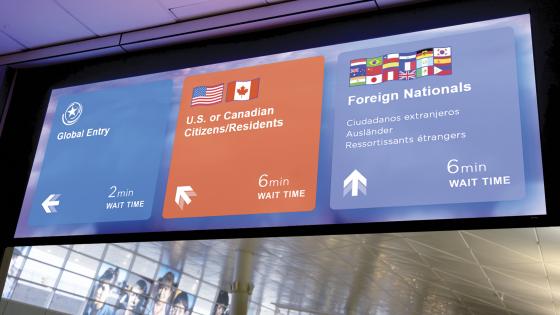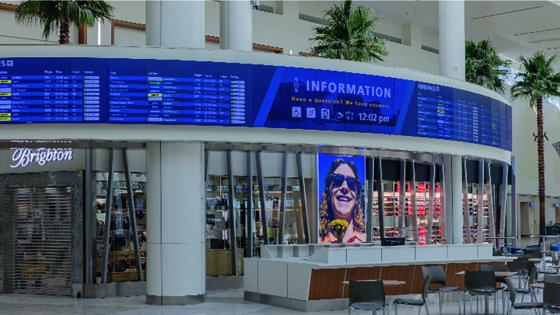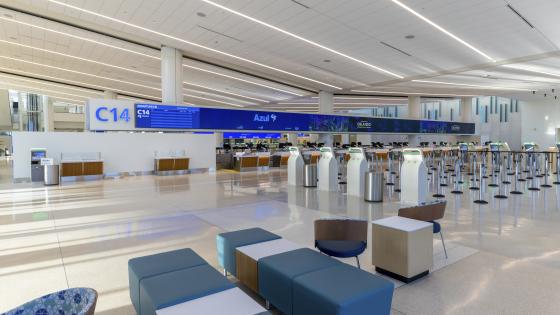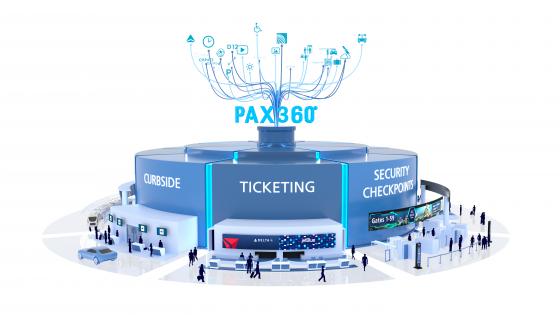Airports can use visual communication to enhance both their facilities and the experience of those who use them. Synect CEO Yahav Ran explains how
Travel has entered a new era where passengers need, expect and demand more. Airports are increasingly using specialist tools to enhance the passenger experience – at the same time influencing traveller behaviour, increasing capacity and improving operations.
Modern passengers prize simplification and convenience above all. They want to glide through the airport as quickly and easily as possible. Ad hoc digital signage can’t support this goal – and a disparate on-premises content and communication strategy only leads to visual noise and frustration. In some instances, putting up a display and messaging without a careful strategy for the whole airportcan make a pain-point situation worse.

Yahav Ran is the CEO of Synect, a full-service agency that is transforming airport visual communication
Visual communication
In these circumstances, a thoughtful, connected visual communication programme can deliver. Imagine a situation whereby larger-than-life digital airline and airport branding welcomes passengers and guides them to their check-in. Then imagine that same branding can automatically move, shrink, contract and expand – based on the fight schedule – in a way that solves common use scenarios and fluctuating demand. Implementing new self-serve programmes? No problem, because the digital displays and content strategy can educate passengers on every step of the process.
Moving on to the security checkpoint, engaging visual content helps passengers prepare for screening by educating them on the divestment process, which in turn improves efficiency and throughput. Dynamic wait times and engaging animations reduce perceived wait time. Those same signs can be wheeled around and repositioned as the security lanes change. Overhead LED displays can tell passengers where to queue with lane IDs, wait times, promotions about concessions, and more.
The traditional mechanism involves using templates and tables to create content that will never look good enough to wow customers, win awards or truly enhance a facility
A cohesive strategy
At the gate, high-impact visuals deliver boarding information that synchronises with the lighting system to ensure passengers always know what’s going on, no matter where they are sitting. Informed, at ease passengers can then relax or enjoy concessions options near the gate. Visual information, high-visibility messaging and colour coding ease them through boarding when it’s the right time – ending the traditional “what’s going on at my gate?” anxiety once and for all.
Arriving international passengers can benefit from multilingual wayfinding, which displays languages based on the flight schedule and the passenger’s country of origin. This helps ease travellers through Customs and Immigration, CPB (US Customs and Border Protection) and beyond, enabling them to make use of visual messaging and guides to help them glance-and-go.
All these signs – from kerbside to gates and back – are connected and managed under a single system, with one cohesive content strategy.
Equally importantly, the management system does away with the need for trained staff to create content and make updates. It does this through customisation and integration on a per-airport basis, pulling data like counter allocation, TSA lane IDs, wait times, and more directly from the AODB (airport operational database) or other airport systems to make intelligent programming decisions across the airport.

Visual communication can ease passengers’ progress through CBP, as shown here at Dallas Fort Worth International Airport
Already happening
This is not an imaginary scenario. It’s possible, and it’s already happening at early-adopting airports across the United States. These capabilities and technologies can be seen at Dallas Fort Worth International Airport, John F Kennedy International Airport, Orlando International Airport and other award-winning facilities.
Passenger360 is a visual communication platform from Synect that is helping airports go beyond digital signage with flexible, responsive content programmes that can scale from kerbside to gates and back again. It is a new approach to visual communication that helps airports move on from digital signage by focusing on informed, engaged passengers, ease of management and operations, and cinema-quality content throughout the airport.
Out with the old
The old digital signage approach is to put up FIDS boards, or a wayfinding kiosk solution to use in high-traffic areas, or similar one-off scenarios. The new visual communication method is to use Passenger360 for enterprise-level airport communication. All screens throughout the airport can be connected to one system and they can share one connected, cohesive content strategy that brands the airport and delivers a pleasant, memorable and highly convenient experience.
The traditional mechanism involves using templates and tables to create content that will never look good enough to wow customers, win awards or truly enhance a facility.
The new visual communication-driven approach, however, involves implementing custom-created, beautifully branded content from a professional studio, then making the content and system smart enough that it can change how and when it needs without any manual input required. It’s always fresh, relevant and helpful. Manual controls and inputs are implemented only where required by the client.

Passenger 360 in use in the Palm Court at Orlando International Airport’s Terminal C
Customisation is key
Investing in a system customised for a specific airport means that data, such as the day’s flight schedule or passengers’ countries of origin, can drive smart programming and translation of content. Smart integration means that while simply running an airport as usual, operators are automatically making the essential changes and updates to the visual communication content and programmes playing throughout.
Custom business rules mean Passenger360 can make thousandsof decisions per second for efficient, hands-off operation. Intuitive, manual overrides and controls are availableonly where an airport wants them.

Visual communications offer branding opportunities
Evolution or revolution?
Synect’s Passenger360 can be used to upgrade outdated digital signage systems using existing displays. It can also be implemented as a pilot or at a single location and it will be ready to scale from kerbside to gates and back again, as and when required. Building an entirely new facility? Passenger360 can help make it modern, beautiful and future proof, particularly if Synect is involved early enough in the designing process for airport operators to truly make the most of the opportunity.
Passenger360 is screen and configuration agnostic. It works from kerbside to gates and back to guide passengers across the terminal or even multiple facilities — and it’s all controlled from one location. Installingit is an opportunity for operators to free themselves from disparate digital signage systems and vendors. It is also a system that can go anywhere and expand in size, area, form and function as the airport grows.
The world of airport visual communication has changed and Synect is committed to providing the tools needed to envision and take advantageof new capabilities, using both digital twins and 3D environments to help airports and consultants experience it for themselves.

Installation of the Passenger360 visual communication platform enables airport operators to connect all screens to a single system
